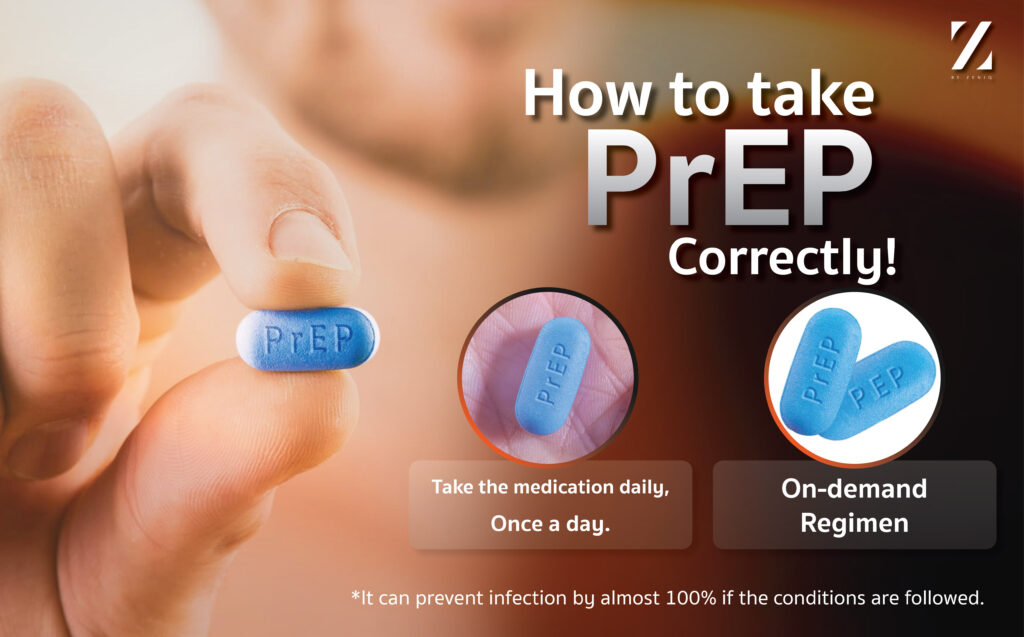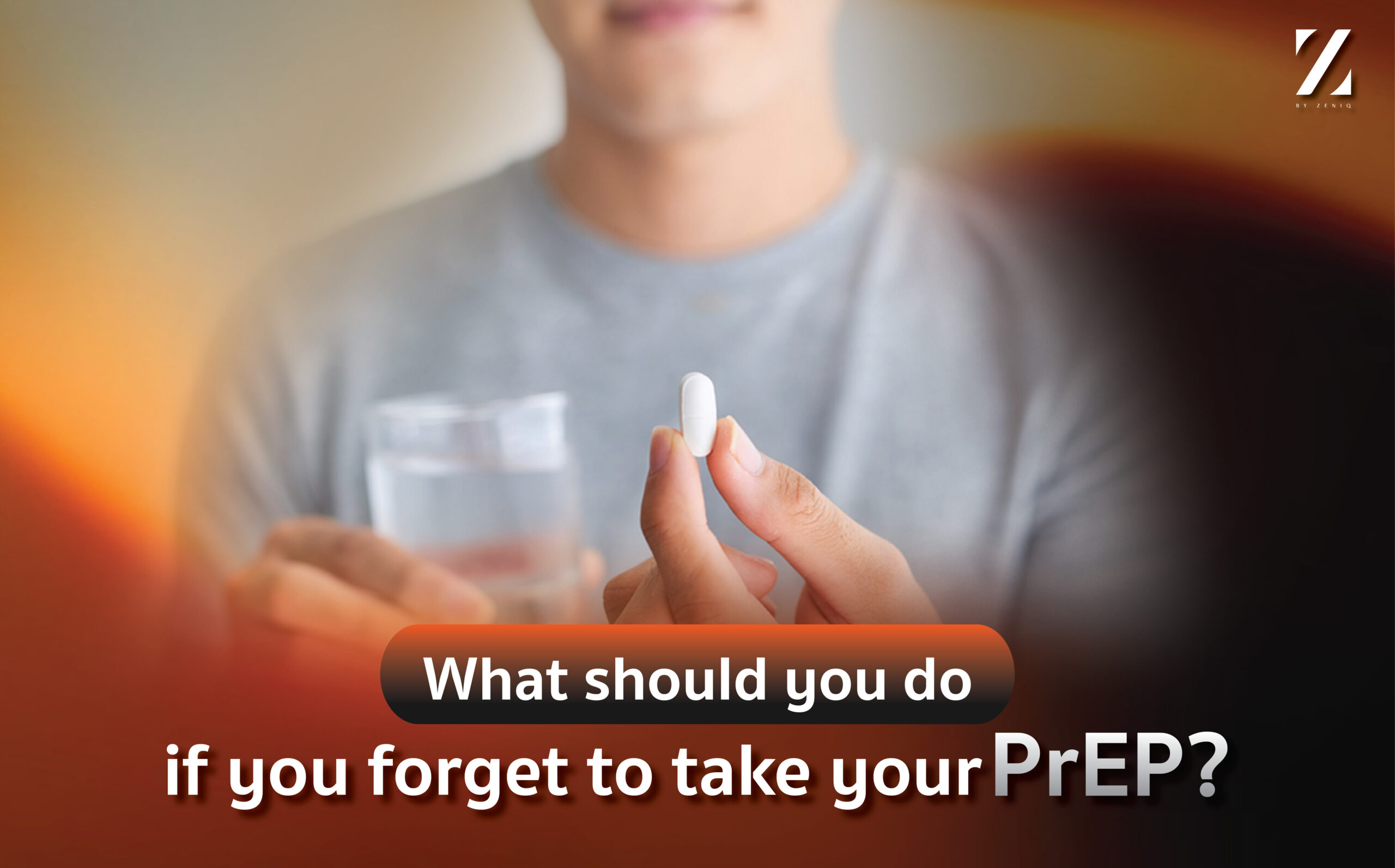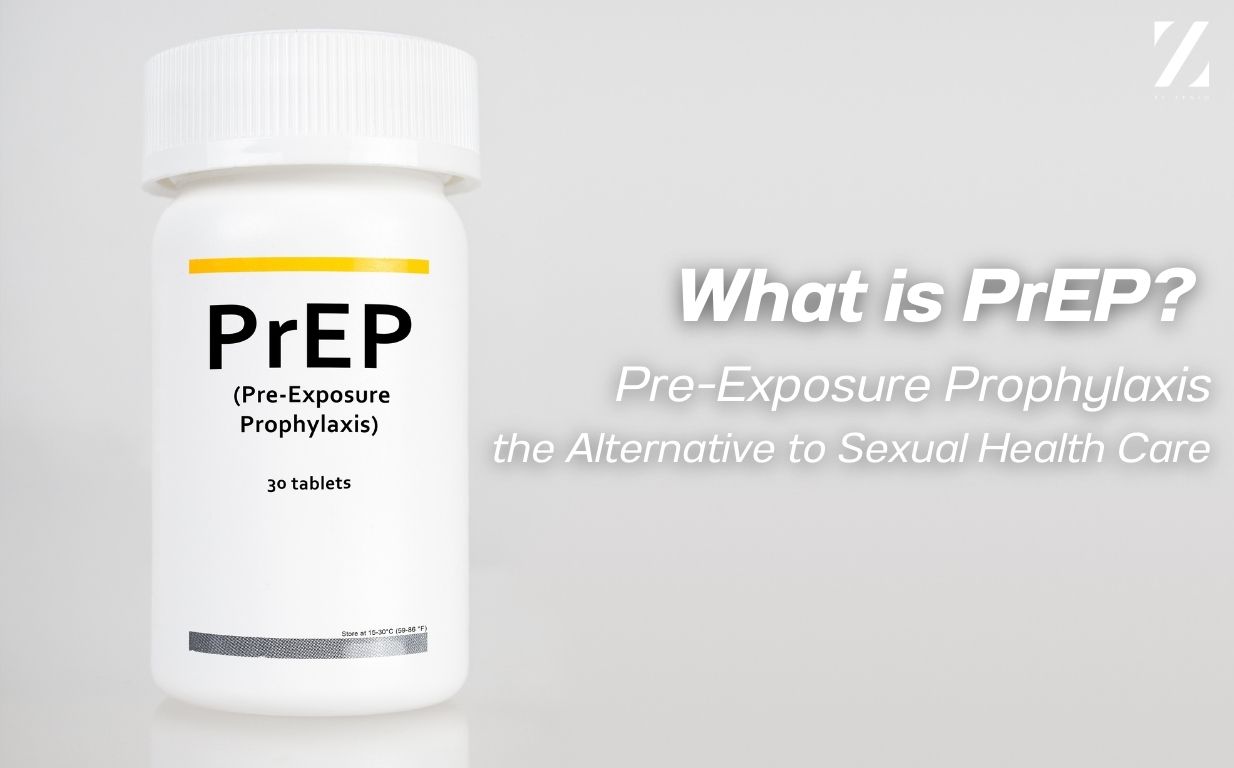Pre-Exposure Prophylaxis (PrEP) has become essential for preventing HIV, especially for high-risk groups. It is recognized by the World Health Organization (WHO) as one of the key tools in combating the global HIV epidemic. Let’s understand what PrEP is, who it is for, its benefits and drawbacks, how to use it effectively. It is essential to make an informed decision before starting treatment.
What is PrEP?
Pre-Exposure Prophylaxis or PrEP is a medication that helps prevent HIV infection. The U.S. Food and Drug Administration (FDA) has approved several formulations, with the following commonly used in Thailand:
- TRUVADA, TENO-EM, and TENOF-EM: These contain a combination of Tenofovir disoproxil fumarate and Emtricitabine. Thailand’s generic version, TEMO-EM, has the same active ingredients as TRUVADA.
- Descovy: Combines Tenofovir alafenamide and Emtricitabine.
PrEP vs PEP: What is the Difference?

Post-Exposure Prophylaxis (PEP) and Pre-Exposure Prophylaxis (PrEP) focus on preventing HIV infection but serve different purposes:
- PEP: This is an emergency medication that must be taken within 72 hours of potential exposure. It is a 28-day regimen that must be started sooner for its effectiveness.
- PrEP: This is a preventive medication that must be taken before exposure in one of the two ways:
- Daily PrEP: A pill taken daily at the same time.
- On-Demand PrEP: A pill taken before potential exposure as needed.
Who Should Take PrEP?
PrEP is suitable for individuals at high risk of HIV infection:
- Those engaging in sexual activity with individuals of the same sex.
- People with multiple sexual partners or are frequently changing partners.
- Individuals with an HIV-positive partner.
- Sex workers.
- Drug users who share needles.
- Individuals who have used PEP consistently in the past, but continue engaging in high-risk behavior.
Who Should Avoid PrEP?
PrEP is not suitable for:
- Individuals already living with HIV or with compromised immune systems like cancer patients or those undergoing chemotherapy.
- People with certain chronic conditions, such as liver disease, hepatitis, cirrhosis, or chronic kidney disease.
- Those with a history of allergic reactions to antiretroviral drugs like Tenofovir or Emtricitabine.
Consulting a healthcare professional is vital for exploring alternative risk-reduction strategies.
How Effective is PrEP?
When taken correctly under medical supervision, PrEP is nearly 100% effectiveness in preventing HIV. However, adherence to the prescribed regimen is crucial. Using condoms along with PrEP further enhances protection and helps prevent other sexually transmitted infections (STIs).
Pros and Cons of PrEP
- Pros:
- High efficacy in preventing HIV infection.
- Safe for use along with other contraceptives.
- Reduces anxiety about HIV infection and enhances sexual health confidence.
- Cons:
- Possible side effects such as nausea, headaches, and stomach discomfort, typically resolving within 1-2 weeks.
- Rarely, but serious side effects include kidney issues or bone density loss.
Where to Get PrEP and What is its Cost?
PrEP is available at public and private healthcare facilities nationwide. Prices may vary. For comprehensive services, including risk assessment, counseling, and medication, you can visit Z by Zeniq for all-in-one care.
Steps Before Taking PrEP
Before starting PrEP, you must undergo a thorough health screening, including taking HIV and blood tests to assess liver and kidney functions. Regular follow-ups every three months are required to monitor safety and effectiveness.
How to Take PrEP Correctly?
PrEP pills contain two active ingredients in one tablet (Fixed Dose Combination) and can be taken in two ways:
Daily PrEP:
- Start at least 7 days before potential exposure.
- Take one pill at the same time every day.
- Continue use for 4 weeks after risk exposure ends, as advised by your doctor.
On-Demand PrEP:
- Take 2 pills 2–24 hours before any sexual activity.
- Follow with 1 pill daily for 2 days after the last exposure.
What If You Forget a Dose?

If you forget to take your PrEP medication, consult your doctor immediately for guidance tailored to your situation.
Must Condoms Be Still Used with PrEP?
While PrEP offers nearly 100% protection against HIV, it does not prevent other STIs. Using condoms along with PrEP ensures broader protection and safety.
Is PrEP Safe?
PrEP is highly safe with minor side effects such as fatigue, dizziness, or nausea in the initial days. Serious side effects such as kidney issues or bone loss are rare and require regular monitoring.
Is PrEP Available in Injection Form?
Although injectable PrEP is available in a few countries like the U.S. and parts of Europe, it remains under research in Thailand. Oral PrEO continues to be the best option when taken correctly.
Conclusion
PrEP is a nearly 100% effective HIV prevention pill when used correctly. It is ideal for high-risk individuals but unsuitable for those with compromised kidney function or who are already HIV-positive. Combined with condoms, PrEP ensures maximum safety and protection against HIV and STIs.

